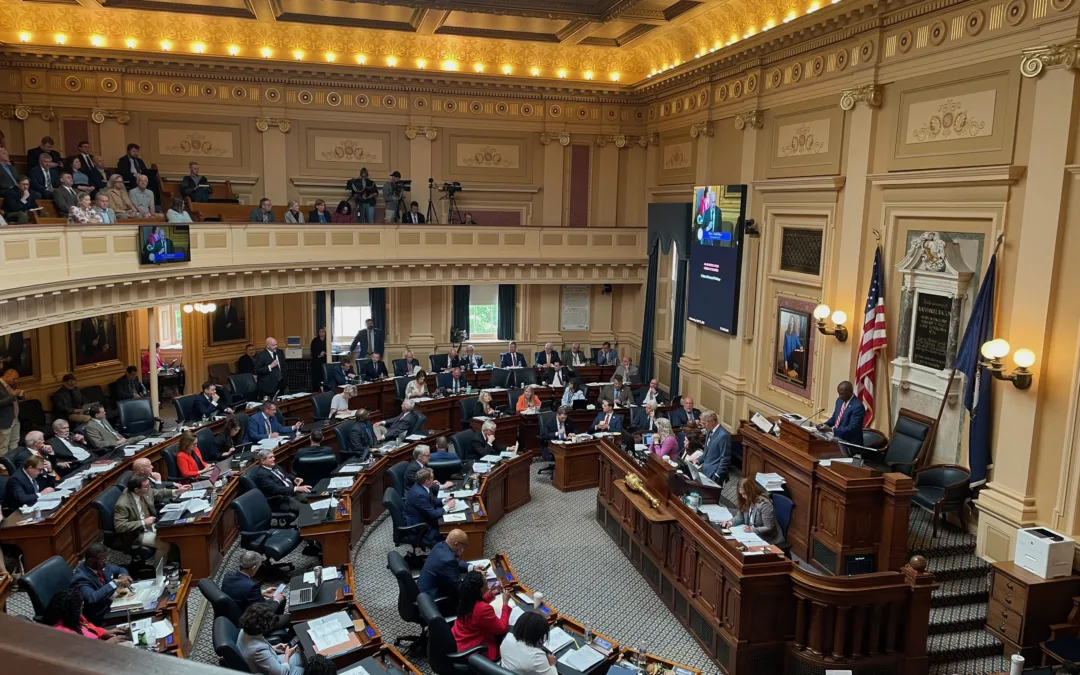
Students found it hard to read, suffered lower grades and in general struggled over the last six months.
RICHMOND – Students and teachers struggled to get through the last six months in Virginia schools. Regardless if they used in-person or remote styles, the numbers still didn’t turn out great.
Members of the Virginia Board of Education heard this data Thursday. Staff members sketched out the impact COVID-19 had on pre-kindergarten through 12th grade.
Holly Coy, assistant superintendent for policy, equity and communications, led the discussion. She explained that each district had control of how they taught, as well as when to go back to in-person instruction.
Before welcoming students back into the classroom, school districts were asked to do a few things. First, the district had to show how they would handle COVID-19 restrictions. Second, how would those efforts impact the school, in terms of cost and manpower. Third, districts had to consider the amount of COVID-19 infection in the community. Would it be safe to return to in-person instruction? Lastly, the districts had to decide which groups to include for in-person learning. They also had to consider a timeline for phasing in additional groups.
After considering the five steps, the department offered further guidance through a decision matrix.
“We provided a matrix to try and help divisions really kind of hone in on ‘okay, we’ve asked all of these questions. What do we really do with all of the information that we have gathered from our community, from our division, in those five steps?’” Coy said.
The matrix recommended opening strategies for school divisions based off of the level of community coronavirus transmission. It also showed the level of school impact, coupled with the ability to implement mitigation.
RELATED: Counties Need COVID-19 Relief for Schools and EMS
Schools By the Numbers
Each school division had and still has control over when to return to in-person instruction.
Michael Bolling, assistant superintendent of learning and innovation, presented a three-slide chart showing divisions’ decisions from Sept. 8, 2020 to Jan. 26. Out of 132 school divisions in Sept. 2020, 10 went in-person four or five days a week and 67 practiced a fully-remote model. On Dec. 12, 2020, nine divisions remained in-person, while 52 stayed fully-remote. By Jan. 26, 13 divisions practiced in-person learning and 43 remained fully-remote.
“We’ve had a decrease in the number of divisions offering fully remote instruction and that percentage has dropped by about 20% since September,” Bolling said. “And those have shifted into some version of in-person instruction, offering in-person instruction.”
Even with the drastic difference in operational methods throughout the state, there was one similarity across the commonwealth: attendance dropped.
Sept. 30, 2020 PreK-12 enrollment was 45,327 students lower than the state total from Sept. 30, 2019.
Enrollment declines occurred mostly in preschool – which noted an approximate 6,400-pupil (18.58%) decline – and kindergarten, where approximately 12,000 (12.79%) students did not start to school .
Preschool drops were four times larger among children from economically-disadvantaged families. They were also larger among Black and Hispanic children as compared to white and Asian children.
“You notice that a number of parents have chosen the option of not starting or delaying the start of kindergarten this year, and potentially looking at next year,” Bolling said.
He noted that students in divisions that offered solely remote learning experienced larger drops in enrollment, compared to those offering some form of in-person enrollment.
Schools Face Challenges
The state found that one of the largest challenges impacting schools this year involved failing students.
Compared to Fall 2019, percentage numbers for at-risk kindergarten and first grade students displaying signs of reading failure increased by approximately 10%.
The largest increase occurred among Black, Hispanic, economically disadvantaged and English learner students.
Out of 132 school divisions, 93 completed an analysis of academic achievement levels in Nov. 2020. For pre-K to second grade, 68 divisions reported that over 50% of their students were at or above expected levels in reading, followed by 56 divisions reporting the same average in math.
In third, fourth and fifth grades, 63 divisions reported that over 50% of their students were at or above expected levels in reading, followed by 57 divisions reporting the same average in math.
“A number of school divisions are reporting that their students are at or above expected levels in reading and mathematics,” Bolling said. “However, when we’re talking about 68% is determining that 50% of their students are at or above, that also shows that there has been some significant loss.”
The 57-district Northwest Evaluation Association’s Measures of Academic Progress assessment revealed a lesser learning loss in reading, but displayed a higher learning loss in math.
The upwards of 30,000 MAP assessments the department received per grade level offered a snapshot of the pandemic learning range in Virginia, compared to the precious fall. Dr. James Lane, superintendent of public instruction, noted that since the assessments occurred virtually, parents could have helped the students.
Lane also noted that the Standardized Test for the Assessment of Reading displayed similar findings, showing a two percent reading loss in Virginia, compared to a national one percent reading loss.
RELATED: Bill Would Change How Virginia Schools Provide Healthcare
Reviewing Obstacles
Improper internet access didn’t help the learning issues.
Bolling noted that at the start of the pandemic, the department estimated that approximately 20% of Virginia student households did not have access to reliable internet.
“We have provided a number of funding sources that have provided reliable access for many students,” Bolling said. “But we still have challenges in this area.”
Absenteeism also presented an issue.
“Over 50% of our school divisions are reporting absenteeism is higher than last year,” Bolling said. “Now I think it’s important to note that every school division gathers absenteeism data in different ways, meaning they have different instructional modalities.”
For example, some divisions base absenteeism off of in-person numbers, while others have a hybrid approach.
Giving Credit
Lane said that he gave huge credit to the teachers and the different approach to learning they took last spring.
Bolling also gave accolades to the commonwealth’s teachers.
“I’ve got to tell you, the teachers, as Dr. Lane said, are the real rock stars here. They have pivoted and learned so much so quickly. Our hats are certainly off to them because they, for many of these individuals, they never taught or had any experience on virtual learning,” Bolling said. “And so now they have, certainly.”
Bolling referred to the state’s professional development rollout for education as a “tremendous effort on behalf of all school divisions and teachers in the state of Virginia.”
Amie Knowles reports for Dogwood. You can reach her at [email protected]
Politics

Youngkin, Democrats to start over on budget talks
The Republican governor stood with Democratic leaders in the General Assembly on Wednesday in a bid to ease tensions over their budget debate....

VIDEO: Domestic abuse victims speak out against the gun law bills Gov. Glenn Youngkin vetoed
Senate Bill 47 and House Bill 46 aim to close the loophole that allows offenders to transfer their firearms to someone else instead of relinquishing...
Local News

Virginia verses: Celebrating 5 poetic icons for National Poetry Month
There’s no shortage of great writers when it comes to our commonwealth. From the haunting verses of Edgar Allan Poe, who found solace in Richmond's...

Join the fun: Recapping Family Literacy Night’s storybook adventures
When’s the last time you read a book aloud with a loved one? If it’s difficult to answer that question, then maybe it’s time to dust off that TBR...





